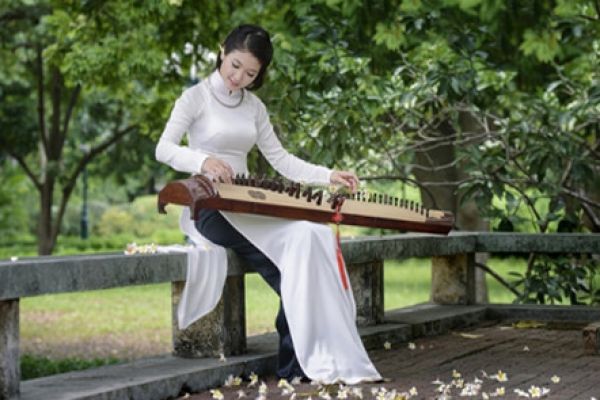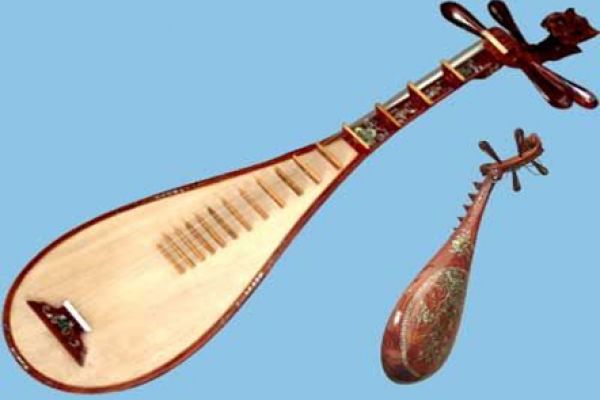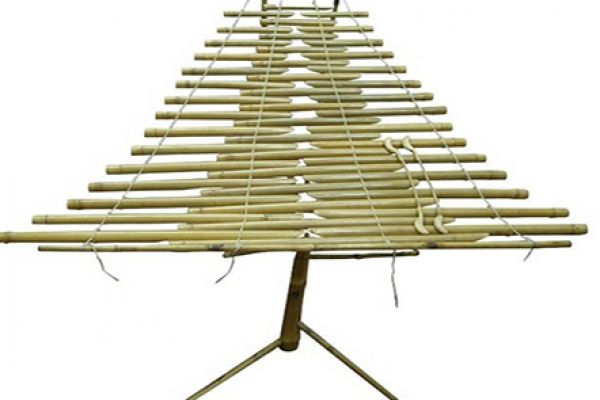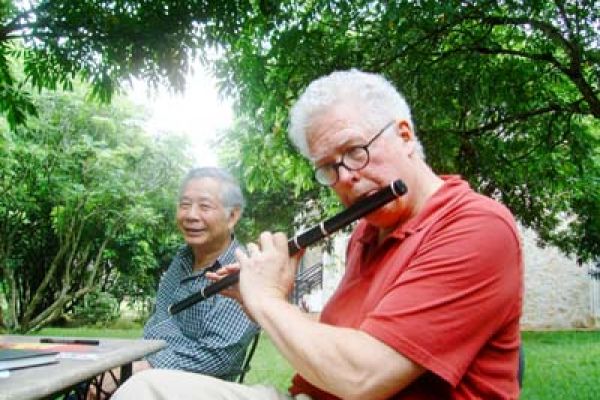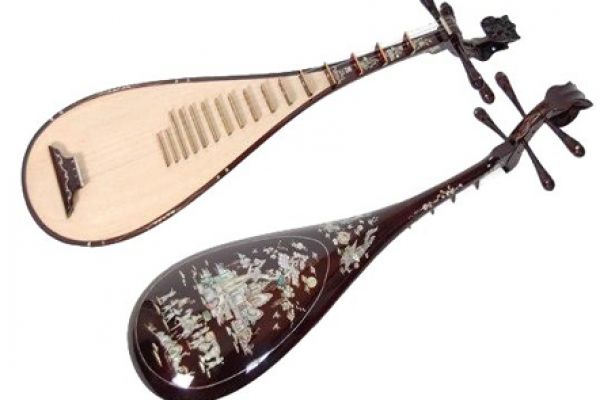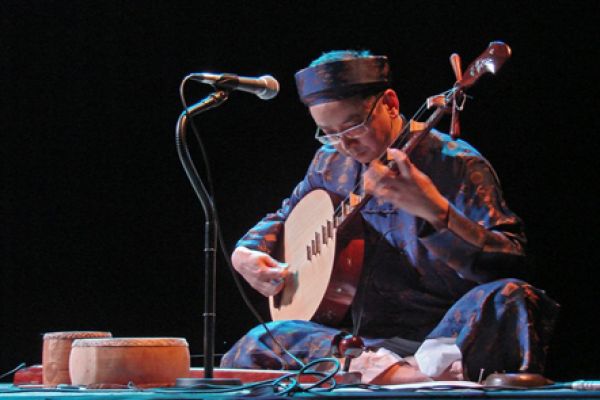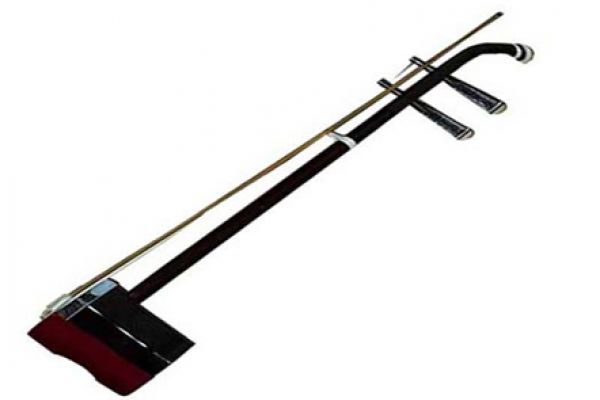The most notable particularity of K'Ni is that it has no resonator. The whole K'Ni is a round or straight branch of bamboo section about 50-70 cm in length, 02-03 cm in diameter. Frets (made of beeswax knobs) are fixed on the main part and the string is hung along its length. The bow is made of a small thin bamboo bar; the player rubs the outside of the bow on the string to produce sounds.
Though its structure is quite simple, the distinctiveness of this instrument resides in the way it is played. The player holds a thread that is linked to the string in his mouth to amplify and transform the sounds. While bowing the string and touching the frets to produce pitches, the player changes the aperture of his mouth according to the tune. Thus, the sounds are altered, almost evoking human pronunciation. However, in reality, the pitch of the sound is not standard. The reason is in the nature of half playing and half singing of the sound produced by the K'Ni. Fast changes of the musician's mouth shapes created by soft mouth membrane doesn't allow standard overtone spectrums and sound waves. Yet, those who are familiar with the sounds of the K'Ni and who understand the vernacular may catch the message of the tune. This is why people say that the K'Ni sings. The E De have added cho nac narration (type of song) to K'Ni to replace human voice.
The K'ni is a musical instrument for men to play in communal houses in ethnic minorities' hamlets or in watch-towers in milpa land. In old times, people never used to play it at home considering that with its mystical sound, the K'ni is a speaker of spirits.

